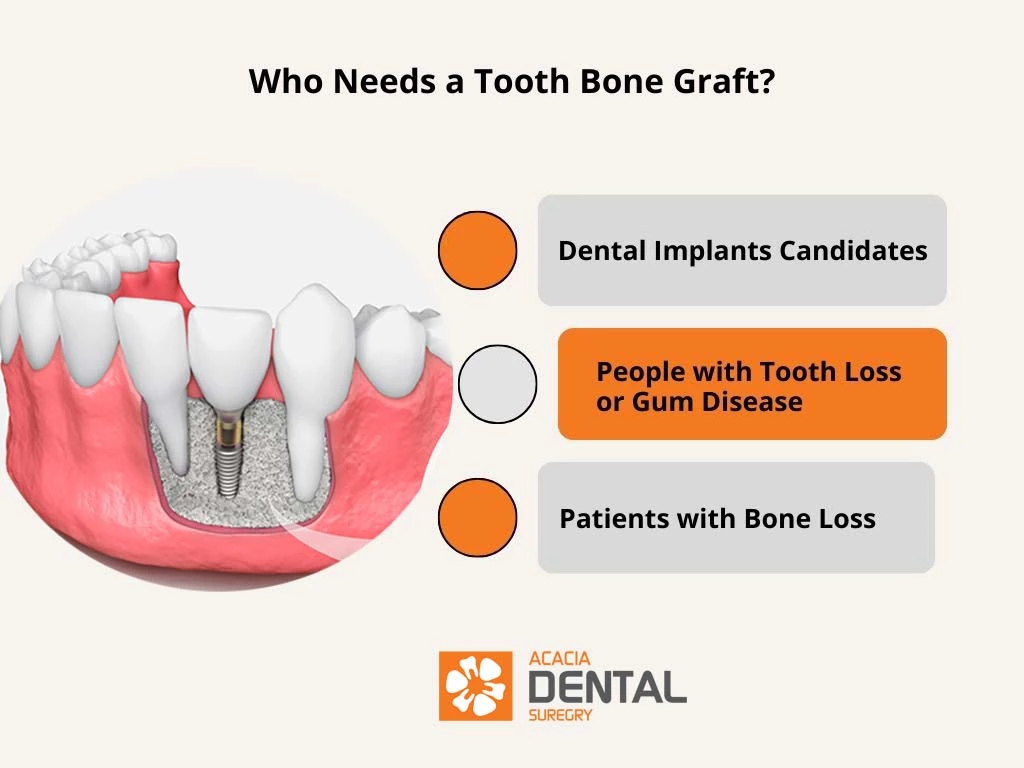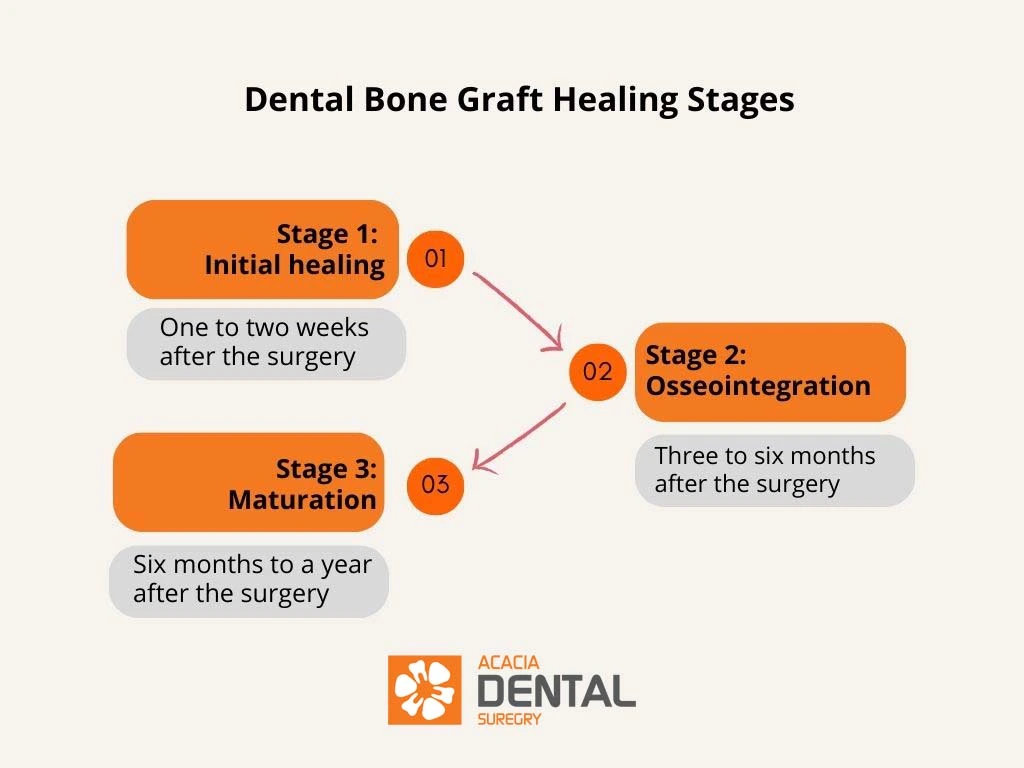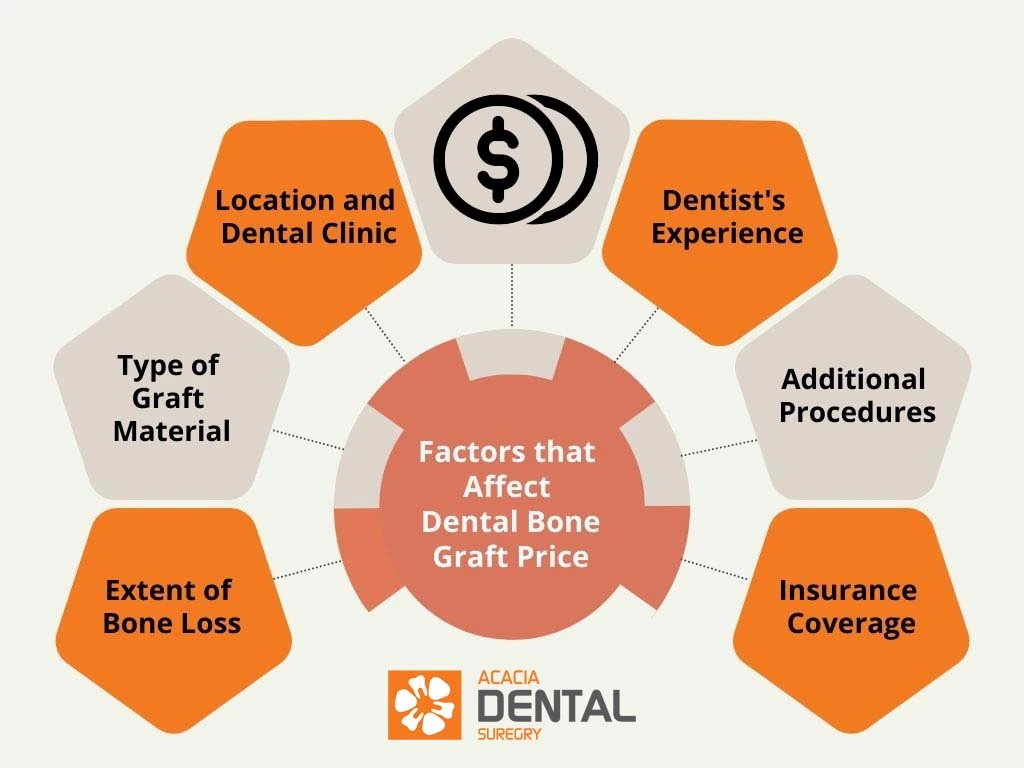It is often necessary to prepare the jawbone for dental procedures, such as dental implants, or to improve the structural integrity of the jaw. In these cases, a dental bone graft will be required. It might seem unfamiliar to you what this procedure is and how it is done. Let’s investigate dental bone grafting, its types, and benefits.
What Is Dental Bone Grafting?
First, let’s define this procedure in detail. Dental bone grafting is a dental surgery that involves the transplantation of bone tissue to repair or rebuild damaged or missing bones in the jaw. This procedure is commonly used in dentistry to restore the structure and function of the jawbone, which can become weakened or deteriorated due to tooth loss, trauma, or other oral health issues.
Dental bone grafting can help improve dental implants’ success, support dentures, and enhance oral health. However, like any surgical procedure, it has its own benefits and risks.
Type of Dental Bone Graft
Different types of bone grafts are available based on the patient’s condition and dental problem. Each method has its own benefits and side effects. However, you should note that choosing the dental bone graft type is up to your dentist. It is not something that you can select.
- Autografts. This is the most common type of bone graft in which the doctor uses the bone from the patient’s body, such as the hip or jaw. However, preoperative tests show whether the patient has enough bone density for this operation.
- Allografts. The second option is when the bone of another person is used. However, it is usually grafted from a corpse because it’s not possible to use a living person’s bone.
- Xenografts. The patient might not be comfortable with using a corpse’s bone! In this case, they have another option: bone from another species, usually animals like pigs or cows.
- Alloplasts. Ultimately, the last option is the synthetic material, which might be more expensive than other options.
It should be noted that dental bone graft cost is not the same for all these types. The dental bone graft type is only one of the factors that can affect the final costs of this procedure.
Who Needs a Tooth Bone Graft?
Don’t worry! You may not need this major dental procedure. A dental bone graft is only required for the following patients:
Dental Implants Candidates
People who need to receive dental implants must have enough bone for this procedure. It should be noted that dental implant is considered a major procedure that is among the most expensive dental procedures, too.
During this procedure, a ceramic or titanium implant (screw-shaped) is placed into the jawbone. This step is the most critical step during the procedure, so the patient’s jawbone should be strong enough to handle the implants. If the jawbone is too thin or soft to support an implant, the patient may need a bone graft to add more bone tissue.
Bone grafts for dental implants may take several months to heal. Therefore, the patient should wait until the bone is completely healed and ready for the implant procedure. A survey showed almost half of the people who are going to receive dental implants need to do bone grafting before the procedure.
You should note that dental bone grafting may affect the final costs of dental implants.
People with Tooth Loss or Gum Disease
Although bone grafting for dental implants is more common, even if you do not receive implants, you may still require a bone graft tooth due to gum disease or tooth loss.
Sometimes gum diseases may affect and damage the bones, which can have many long-term complications or lead to bone loss. Therefore, the patient requires a bone graft to prevent further problems.
Patients with Bone Loss
Some patients may have bone loss due to their health condition or trauma. In most cases, bone loss can affect the appearance of the person and reduce the digestion function because the patient may have problems biting food. Therefore, bone grafting is required to redeem this functionality and augment their appearance.

How Dental Bone Graft Is Done?
Dental bone grafting is a major surgery that requires the patient to be unconscious. Therefore, it is done under anesthesia. Here are the following steps:
- The surgeon will clean the area of the bone and make an incision inside to get to the bone and separate it from the surrounding tissue.
- Depending on how damaged the bone is, the grafting material is placed somewhere inside the bone to help it grow and stick together.
- The surgeon then uses a dissolvable adhesive material to seal and secure the area.
- The incision will be sewed up.
Preparation Before the Surgery
To prepare for a dental bone graft procedure, consider the following steps:
- Consult with your dentist. It is necessary to talk to your dentist before the surgery and discuss the procedure. Let them know about all your concerns so you can feel better on the day of surgery.
- Medication adjustments. Inform your healthcare provider about any medications you are taking, as some may need to be adjusted before the procedure. Certain drugs can affect the body’s production of platelets and clotting factors. It is essential to let the doctor know if you have diabetes. Read more about dental treatment for diabetic patients.
- Follow fasting instructions. What you eat the day before surgery is important. During the consultation, ask the doctor what you should eat or avoid. Furthermore, you should not eat or drink 8 to 12 hours before the surgery.
Recovery and Aftercare Tips
First of all, you should know that a dental bone graft is not a simple surgery. Although you don’t have to stay in the hospital overnight, you need to be careful a few days after the surgery. Furthermore, you may feel discomfort, which is common after this type of surgery. However, if you feel you can’t handle the pain or it won’t go away after a few days, don’t hesitate to talk to your dentist about your condition.
Here are some tips to consider after this procedure:
- Take the medications your doctor has prescribed, such as antibiotics or painkillers.
- Place ice packs on the surgical area to alleviate pain and reduce swelling.
- You need to eat soft foods such as soup the first few days after the surgery. Don’t bite anything hard because it may make the stitches open.
- It is also strictly recommended to avoid drinking hot coffee or tea during the recovery period.
- It is also recommended to avoid doing physical activities, especially contact sports like martial arts or any sports that may contact your face. It is better to wait until the recovery period is over.
Recovery Period
You may wonder how long it may take to recover from a dental bone graft. It should be noted that you won’t need to stay home or follow the aftercare tips for more than one or two weeks. You can go back to your normal life within this period. However, it doesn’t mean you can receive dental implants or do other major dental procedures because it takes up to nine months for the bones to completely heal.
Dental Bone Graft Healing Stages
The healing stages of a dental bone graft may vary depending on the type of graft, the amount of bone needed, the location of the graft, and the individual patient’s health and healing ability. However, a general overview of the healing stages is as follows:
Stage 1: Initial healing
This stage lasts for about one to two weeks after the surgery. During this stage, the grafted bone and the surrounding tissue start to heal and form a blood clot. The patient may feel pain, swelling, bruising, and bleeding at the surgical site.
Stage 2: Osseointegration
This stage lasts for about three to six months after the surgery. During this stage, the grafted bone and the natural bone start to fuse together and become integrated. The patient may not feel any symptoms during this stage, but they should avoid putting any pressure or stress on the graft site.
Stage 3: Maturation
The final stage lasts for about six months to a year or more after the surgery. During this stage, the grafted bone and the natural bone reach their final strength and stability. The patient may be ready to receive dental implants or dentures at this stage, depending on the dentist’s evaluation.

Risks and Side Effects
It is very common to feel pain or swelling after the surgery. But apart from these discomforts, dental bone grafting might have other side effects or risks, including:
- Bleeding,
- Inflammation,
- Infection,
- Blood clots,
- Nerve damage,
- Bone graft rejection.
It is recommended to consult with your dentist if you feel severe pain in the surgical area or have a fever.
How Much Does Bone Grafting for Dental Implants Cost?
The cost of bone grafting for dental implants may vary depending on several factors, such as the type of graft, the amount of bone needed, the location of the graft, and the insurance coverage. Furthermore, this procedure involves other expenses such as X-rays, anesthesia, and medications. Therefore, there is no certain amount for this procedure.

Meanwhile, the average cost of bone grafting for dental implants in Australia can start from $2,000 and may exceed $5,000. You should note that the bone grafting dental cost varies for each patient due to their health condition.
Bottom Line
Dental bone grafting is a valuable surgical technique that can restore the structure and function of the jawbone and improve overall oral health. While it comes with its own set of benefits and risks, patients should consult with their dentist or oral surgeon to determine if this procedure is right for them. With proper care and follow-up, dental bone grafting can provide long-lasting results and improve the quality of life for those who undergo the procedure.
